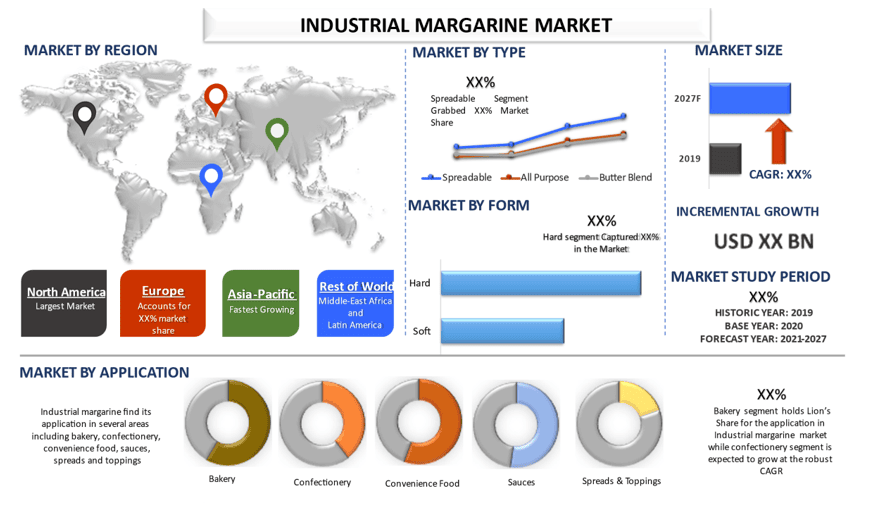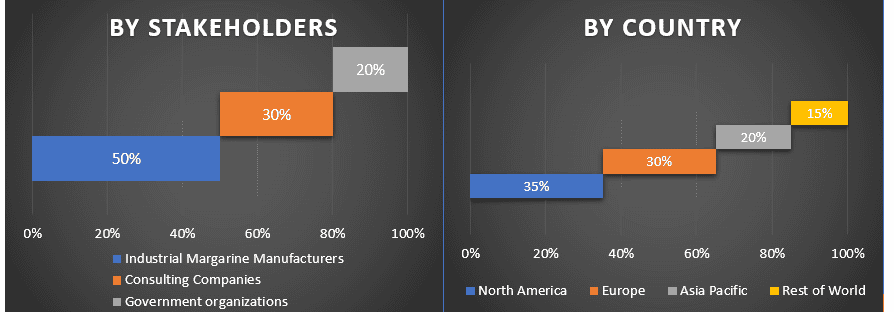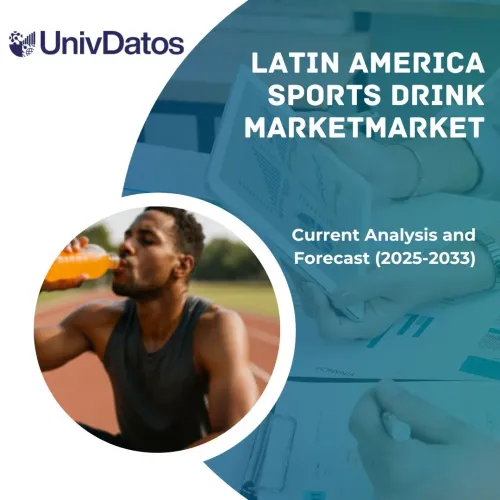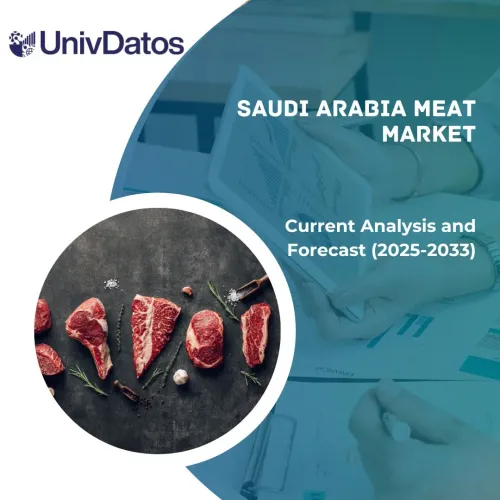- Home
- About Us
- Industry
- Services
- Reading
- Contact Us
Industrial Margarine Market: Current Analysis and Forecast (2021-2027)
Emphasis on Type (Spreadable, All-Purpose, Butter Blend); Application (Bakery, Confectionery, Convenience Food, Spreads- Sauces & Toppings, Others); Form (Hard, Soft); Source (Plants, Animals); Region/Country

The Global Industrial Margarine is Expected to Display an Elevated CAGR of around 5% over the forecast period (2021-2027)
Industrial margarine is a cost-effective, low-risk intervention that may lower body mass index, blood pressure, HbA1C, and cholesterol levels. Margarine is made from vegetable oils, so it contains unsaturated “good” fats — polyunsaturated and monounsaturated fats. These types of fats help reduce low-density lipoprotein (LDL), or “bad,” cholesterol when substituted for saturated fat. They also help in reducing the number of medications needed to treat chronic diseases and lower ischemic heart disease mortality rates. Currently, 60% of Americans have at least one chronic condition, and 40% have multiple chronic conditions. As per WHO, one person dies every 36 seconds in the United States from cardiovascular disease. About 659,000 people in the United States die from heart disease each year, that’s 1 in every 4 deaths.
Moreover, the growing traction towards veganism is also leading to the growth of industrial margarine. As per Veganbits, 7.53 billion vegan people are living worldwide, out of which, 1.2 billion people are living in Africa. People are drawn to vegetarianism for a multitude of reasons, some of which include religion, ethical motivation, health, environmental conservation, economic factors, dislike of meat, and culture. Consuming plant-based foods is just a trend for Millennials and younger generations. Millennials and Gen Z make up 30-32% of the population, respectively, creating the enormous market potential for plant-based foods. As per Nielsen, 85% of Canadians and 83% of United States people are preferring plant-based food over animal-based food.
Global and Regional Per Capita Food Consumption (Kcal Per Capita Per Day)

Wilmar International, Congara, Bunge, Puratos, Associated British Foods, Fuji Oil, Richardson International, Royale Lacroix , Aigremont, EFCO Group, etc., are some of the prominent players operating in the Industrial Margarine market. Several M&As along with partnerships have been undertaken by these players to facilitate customers with innovative products.
Insights Presented in the Report
“Amongst type, All-Purpose segment grabbed major market share”
Based on the type, the market is fragmented into Spreadable, All-Purpose, and Butter Blend. The all-purpose segment grabbed XX% market share and dominated the market. The market of this segment would reach USD XX Mn by 2027. The growing application of all-purpose in baking and cooking is leading to the growth of this segment. However, the butter blend segment is expected to witness a robust CAGR in the forthcoming years.
“Amongst application, confectionery segment to grab considerable market share”
Based on the application, the market is fragmented into Bakery, Confectionery, Convenience Food, Spreads- Sauces & Toppings, and Others (Dessert & Snacks). The bakery segment grabbed XX% market share and dominated the market. The market of this segment would reach USD XX Mn by 2027. Growing demand for the bakery products such as cakes, pastries, etc., is contributing to the growth of the segment.
“Amongst form, hard segment to grab considerable market share”
Based on the form, the market is fragmented into hard and soft. The hard segment grabbed XX% market share and captured USD XX Mn market in 2020. Harder margarine is used in the bakery industry. The growing bakery industry across the globe is contributing to the growth of this segment.
“Amongst Source, plant segment to grab considerable market share”
Based on the source, the market is fragmented into plants and animals. The plant segment grabbed the major market share and dominated the market. However, the animal segment would witness a considerable CAGR in the forthcoming years.
“North America represents one of the largest markets of Industrial Margarine market”
For a better understanding of the market adoption of the Industrial Margarine Market, the market is analyzed based on its worldwide presence in the countries such as North America (the United States and Canada), Europe (Germany, France, Italy, Spain, United Kingdom, and Rest of Europe), Asia-Pacific (China, Japan, India, Australia, and Rest of APAC), and Rest of World. North America region grabbed XX% market for the Industrial Margarine Market industry and generated revenue of USD XX Million in 2020. However, the Europe region would witness the highest CAGR during the forthcoming years
Reasons to buy this report:
- The study includes market sizing and forecasting analysis validated by authenticated key industry experts
- The report presents a quick review of overall industry performance at one glance
- The report covers an in-depth analysis of prominent industry peers with a primary focus on key business financials, product portfolio, expansion strategies, and recent developments
- Detailed examination of drivers, restraints, key trends, and opportunities prevailing in the industry
- The study comprehensively covers the market across different segments
- Deep dive regional level analysis of the industry
Customization Options:
The Industrial Margarine Market can further be customized as per the requirement or any other market segment. Besides this, UMI understands that you may have your own business needs, hence feel free to connect with us to get a report that completely suits your requirements.
Table of Content
Analyzing the historical market, estimation of the current market, and forecasting the future market of the Industrial Margarine Market were the three major steps undertaken to create and analyze the demand for Industrial Margarine across major regions. Exhaustive secondary research was conducted to collect the historical market numbers and estimate the current market size. Secondly, to validate these insights, numerous findings and assumptions were taken into consideration. Moreover, exhaustive primary interviews were also conducted, with industry experts across the value chain of the Industrial Margarine market. Post assumption and validation of market numbers through primary interviews, we employed a top-down/ bottom-up approach to forecast the complete market size. Thereafter, market breakdown and data triangulation methods were adopted to estimate and analyze the market size of segments and sub-segments of the industry pertains to. Detailed methodology is explained below:
Seek More Details About Research Methodology
Analysis of Historical Market Size
Step 1: In-Depth Study of Secondary Sources:
A detailed secondary study was conducted to obtain the historical market size of the Industrial Margarine through company internal sources such as annual reports & financial statements, performance presentations, press releases, etc., and external sources including journals, news & articles, government publications, competitor publications, sector reports, third-party database, and other credible publications.
Step 2: Market Segmentation:
After obtaining the historical market size of the Industrial Margarine market, we conducted a detailed secondary analysis to gather historical market insights and share for type, application, form, and source for major regions. Major segments included in the report are type and application. Further region and country-level analyses were conducted to evaluate the overall adoption of Industrial Margarine across the globe.
Step 3: Factor Analysis:
After acquiring the historical market size of different segments and sub-segments, we conducted a detailed factor analysis to estimate the current market size of Industrial Margarine. Further, we conducted factor analysis using dependent and independent variables such as the growing awareness, growing nutrition deficiency in consumers, etc., A thorough analysis was conducted for demand and supply-side scenarios considering top partnerships, merger and acquisition, business expansion, and product launches in the Industrial Margarine industry across the globe.
Current Market Size Estimate & Forecast
Current Market Sizing: Based on actionable insights from the above 3 steps, we arrived at the current market size, key players in the Industrial Margarine market, and market shares of the segments. All the required percentage shares split, and market breakdowns were determined using the above-mentioned secondary approach and were verified through primary interviews.
Estimation & Forecasting: For market estimation and forecast, weightage was assigned to different factors including drivers & trends, restraints, and opportunities available for the stakeholders. After analyzing these factors, relevant forecasting techniques i.e. bottom-up/ top-down approach were applied to arrive at the market forecast about 2027 for different segments and subsegments across the major markets globally. The research methodology adopted to estimate the market size encompasses:
- The industry’s market size, in terms of value (US$) and the adoption rate of Industrial Margarine across the major markets domestically
- All percentage shares, splits, and breakdowns of market segments and sub-segments
- Key players in the Industrial Margarine market in terms of services offered. Also, the growth strategies adopted by these players to compete in the fast-growing market
Market Size and Share Validation
Primary Research: In-depth interviews were conducted with the Key Opinion Leaders (KOLs) including Top Level Executives (CXO/VPs, Sales Head, Marketing Head, Operational Head, Regional Head, Country Head, etc.) across major regions. Primary research findings were then summarized, and statistical analysis was performed to prove the stated hypothesis. Inputs from primary research were consolidated with secondary findings, hence turning information into actionable insights.
Split of Primary Participants in Different Regions

Market Engineering
The data triangulation technique was employed to complete the overall market estimation and to arrive at precise statistical numbers for each segment and sub-segment of the Industrial Margarine market. Data was split into several segments sub-segments post studying various parameters and trends in the areas of type, application, form, and source of the Industrial Margarine market.
Main Objective of the Industrial Margarine Market Study
The current & future market trends of Industrial Margarine were pinpointed in the study. Investors can gain strategic insights to base their discretion for investments on the qualitative and quantitative analysis performed in the study. Current and future market trends were determined the overall attractiveness of the market at a regional level, providing a platform for the industrial participant to exploit the untapped market to benefit from a first-mover advantage. Other quantitative goals of the studies include:
- Analyze the current and forecast market size of Industrial Margarine in terms of value (US$). Also, analyze the current and forecast market size of different segments and sub-segments
- Segments in the study include areas of type, application, form, and source
- Define and analysis of the regulatory framework for the Industrial Margarine industry
- Analyze the value chain involved with the presence of various intermediaries, along with analyzing customer and competitor behaviors of the industry
- Analyze the current and forecast market size of the Industrial Margarine market for the major countries
- The major region studied in the report includes North America, Europe, Asia- Pacific, and the Rest of the World.
- Company profiles of the Industrial Margarine market and the growth strategies adopted by the market players to sustain in the fast-growing market
Deep dive regional level analysis of the industry
Related Reports
Customers who bought this item also bought










